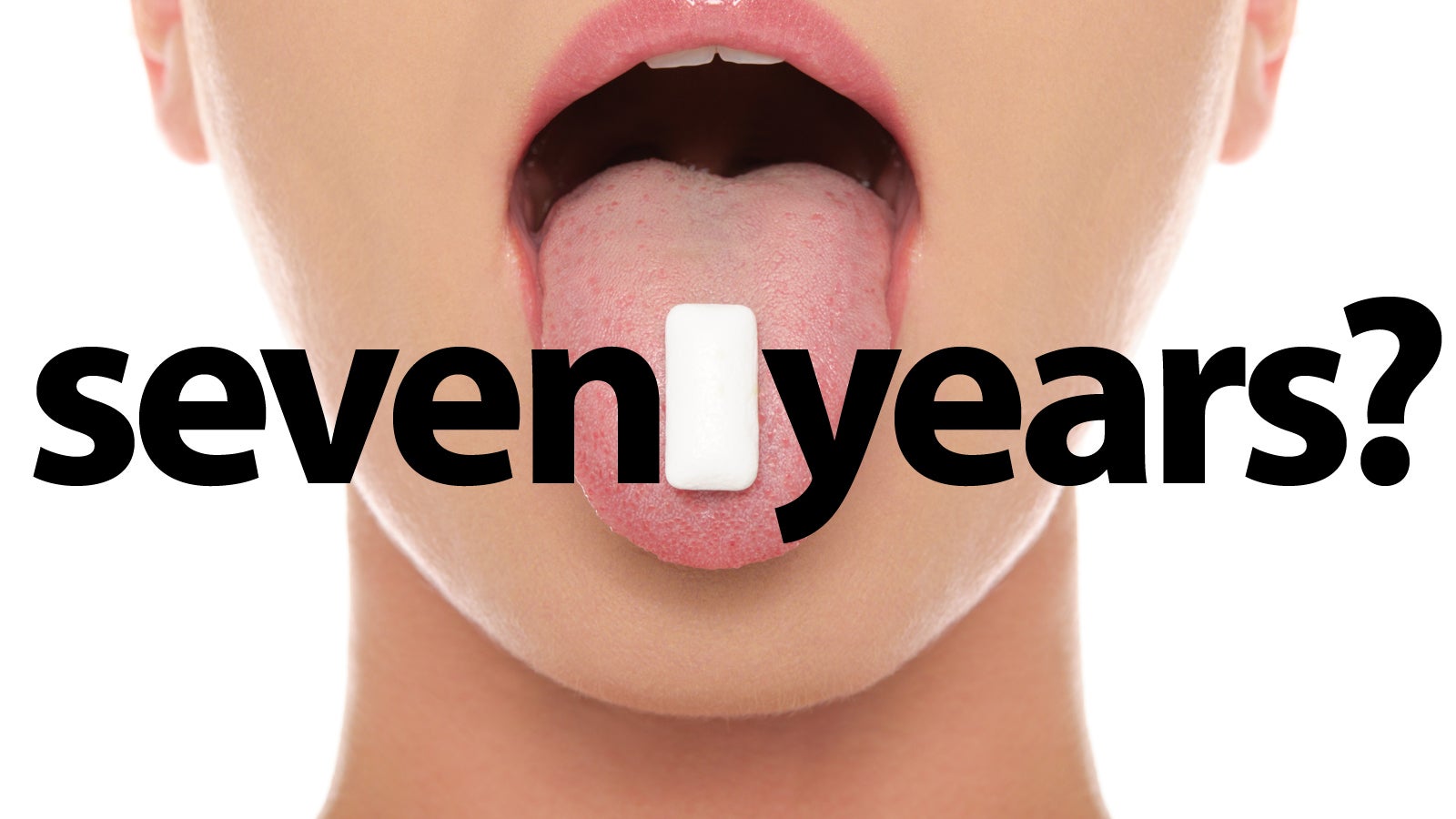Nearly every morning, my regular routine consists of waking up at 8:30, and leaving around 8:50 for my 9:05 class. Following the 50-minute class, I will walk right over to the HUB, and immediately hop in line at the cafe to grab my daily toasted cinnamon raisin bagel with cream cheese. At this rate, my weekly consumption rate of bagels is 4-5 per week. In fact, I look forward to my daily bagel, as breakfast boosts your metabolism, and often sets me up for a great, productive day. Little did I know, however, is that bagels are often debated as being highly unhealthy for you. I decided to investigate this topic, and see if I really do need to switch up my morning routine.
The Ingredients
My first step was to research what exactly a bagel consists of, and which ingredients can be considered unhealthy. According to one professional writer, Carly Schuna, who specializes in food, cooking, nutrition, and fitness writing, one plain bagel contains around 360 calories, 14 grams of protein, 2 grams of fat, 3 grams of fiber, and 70 grams of carbohydrates, if the bagel is 4 1/2 inches in diameter (Schuna). A whole wheat, oat bran, or whole gr ain bagel doesn’t make these statistics much better, still retaining significant calories. In fact, Schuna even discusses how a plain bagel actually ranks at 69 on the glycemic index, on which anything ranking 70 or higher is considered to have a “high glycemic index score”, a rather disturbing statistic (Schuna). Oftentimes, as food expert Joy Bauer points out, classic white bagels are often extremely starchy, and made with refined wheat flour, a type of flour that lacks all of its original, healthy nutrients and fiber (Bauer). Additionally, they have some of the worst sodium contents of all foods. A traditional plain bagel can sometimes contain 443 miligrams of sodium, a significant chunk of one’s daily value, according to one editor of FitDay.com. To worsen the situation, this refined wheat flour is condensed into a high-calorie bagel, equal to about five slices of caloric white bread, as she discusses in her article (Bauer). Especially when paired with a high-calorie extras such as cream cheese, they are a recipe for disaster, as they can often induce constant weight gain, as Schuna points out. It’s clear that bagels don’t have the greatest track record, and have a dark side to them that may be taken into consideration before I buy my next one tomorrow morning. However, even scarier than their caloric content is the potential dangers these dense breads pose to your body.
ain bagel doesn’t make these statistics much better, still retaining significant calories. In fact, Schuna even discusses how a plain bagel actually ranks at 69 on the glycemic index, on which anything ranking 70 or higher is considered to have a “high glycemic index score”, a rather disturbing statistic (Schuna). Oftentimes, as food expert Joy Bauer points out, classic white bagels are often extremely starchy, and made with refined wheat flour, a type of flour that lacks all of its original, healthy nutrients and fiber (Bauer). Additionally, they have some of the worst sodium contents of all foods. A traditional plain bagel can sometimes contain 443 miligrams of sodium, a significant chunk of one’s daily value, according to one editor of FitDay.com. To worsen the situation, this refined wheat flour is condensed into a high-calorie bagel, equal to about five slices of caloric white bread, as she discusses in her article (Bauer). Especially when paired with a high-calorie extras such as cream cheese, they are a recipe for disaster, as they can often induce constant weight gain, as Schuna points out. It’s clear that bagels don’t have the greatest track record, and have a dark side to them that may be taken into consideration before I buy my next one tomorrow morning. However, even scarier than their caloric content is the potential dangers these dense breads pose to your body.
The Dangers of a Bagel
As NBC News reporter Maggie Fox discussed, it has been found that consuming food and drink that contain a high glycemic index rating can increase one’s risk of lung cancer, on account of the cell-stimulating components of high-glycemic foods (Fox). As I previously stated, bagels contain a significantly high glycemic index rating, giving it suspicion in the cause of a number of cancers. A number of studies have attempted to reveal a link between a food’s glycemic rating and a range of different types of cancer, ranging everywhere from pancreas to colorectal to ovarian, however, according to Fox, these studies have often resulted in inconclusive findings (Fox).
A Comparison: Are Donuts Healthier?
According to a few sources, even donuts can be considered slightly healthier in the long run, despite the initial widespread belief that they would far outweigh bagels in cons as a healthy breakfast option. Donuts, which also contain a rather high caloric and carbohydrate count, are of course unhealthy. A classic glazed doughnut contains 229 calories and 25 grams of carbs alone (FitDay). However, studies have actually found that bagels, although possessions fewer calorie counts, actually are considered more unhealthy as they contain a greater sodium content, as well as carbs (FitDay). I found this absolutely shocking, as, if given the choice between a donut and a bagel for breakfast, I would nine times out of ten choose the bagel, being under the impression that it has a greater health value. However, this doesn’t necessarily mean that a bagel is always the worse choice. There are a variety of options to help make the bagel just a little bit healthier, if you choose it as a morning snack.
doughnut contains 229 calories and 25 grams of carbs alone (FitDay). However, studies have actually found that bagels, although possessions fewer calorie counts, actually are considered more unhealthy as they contain a greater sodium content, as well as carbs (FitDay). I found this absolutely shocking, as, if given the choice between a donut and a bagel for breakfast, I would nine times out of ten choose the bagel, being under the impression that it has a greater health value. However, this doesn’t necessarily mean that a bagel is always the worse choice. There are a variety of options to help make the bagel just a little bit healthier, if you choose it as a morning snack.
Alternatives and Solutions
Of course, the easiest solution is to simply not choose a bagel as your choice of breakfast. A number of different, similar options can provide a world of good to your body in comparison. These include English muffins, sandwich thins, or even just a slice of toast. However, if you must have your morning bagel, it is always better to choose a variety that is not pure white  bread. Some alternatives include oat bran, whole wheat, or whole grain, as Bauer points out. Another great option is to instead ask for a mini bagel, which will right away cut down on the unhealthy parts of the bagel as the serving size is smaller. According to Tanya Zuckerbrot of Fox News, switching to mini-bagels can save around 200 calories daily, or nearly 24 pounds of extra weight you would avoid over the course of one year (Zuckerbrot). One final common alternative is to scoop out some of the filling inside the bagel, and add a thin layer of a healthier topping, whether it be a light or non-fat cream cheese, a low-fat cottage cheese or peanut butter, hummus, or nut butter, as both Bauer and Zuckerbrot suggest.
bread. Some alternatives include oat bran, whole wheat, or whole grain, as Bauer points out. Another great option is to instead ask for a mini bagel, which will right away cut down on the unhealthy parts of the bagel as the serving size is smaller. According to Tanya Zuckerbrot of Fox News, switching to mini-bagels can save around 200 calories daily, or nearly 24 pounds of extra weight you would avoid over the course of one year (Zuckerbrot). One final common alternative is to scoop out some of the filling inside the bagel, and add a thin layer of a healthier topping, whether it be a light or non-fat cream cheese, a low-fat cottage cheese or peanut butter, hummus, or nut butter, as both Bauer and Zuckerbrot suggest.
Final Thoughts
Overall, it is apparently clear that bagels are not the healthiest breakfast option due to their high counts of non-nutritional ingredients, and the condensed amount of pure bread contained. Often, even donuts can be considered a healthier option, something both shocking and alarming. However, there are lots of healthy alternatives and solutions to make your morning just a little bit more nutritional, whether it be scooping out a little bit of filling, switching to a healthier topping, or scrapping the bagel altogether for a healthier food. All I know is that, next time, I’ll definitely think twice before reaching for that bagel in line after class.
Sources: Source 1 Source 2 Source 3 Source 4 Source 5
Images: Image 1 Image 2 Image 3
 have huge wads of swallowed gum surgically removed because it never digested. However, how accurate is this myth? I decided to investigate.
have huge wads of swallowed gum surgically removed because it never digested. However, how accurate is this myth? I decided to investigate. rubber or latex base, which can take slightly longer. However, the author of this study, Joseph Castro, does not recommend swallowing gum, as in some cases, children have in fact needed gum surgically removed if enough is swallowed in a short enough amount of time, causing constipation. Scary stuff… let’s take a look at another study.
rubber or latex base, which can take slightly longer. However, the author of this study, Joseph Castro, does not recommend swallowing gum, as in some cases, children have in fact needed gum surgically removed if enough is swallowed in a short enough amount of time, causing constipation. Scary stuff… let’s take a look at another study.  broken down. However, a few are a bit more difficult than others (Matson). Although gum most likely passes through the system slower than many other foods, it will usually pass through with ease. However, Matson agrees that this doesn’t mean it is a good idea to regularly swallow gum, for the same reasons, as it has historically needed the rare but possible surgical removal if too large of an amount is present.
broken down. However, a few are a bit more difficult than others (Matson). Although gum most likely passes through the system slower than many other foods, it will usually pass through with ease. However, Matson agrees that this doesn’t mean it is a good idea to regularly swallow gum, for the same reasons, as it has historically needed the rare but possible surgical removal if too large of an amount is present.
















 e the concerning outcome of a handful of tumors developing in the rats linked to the nervous system and brain; however, the ratio correlates heavily with the number of rats expected to develop tumors by chance, which at least brings some appeasement to smartphone users (Ghose).
e the concerning outcome of a handful of tumors developing in the rats linked to the nervous system and brain; however, the ratio correlates heavily with the number of rats expected to develop tumors by chance, which at least brings some appeasement to smartphone users (Ghose).